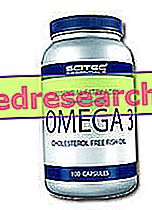
Cetylpyridine (CPC) is a chemical compound with antiseptic properties, better known as cetylpyridinium chloride (INCI Cetylpyridinium chloride ). Due to its chemical and functional characteristics, CPC is a cationic disinfectant belonging to the group of quaternary ammonium salts.
In the United States, cetylpyridine was used as an anti-plaque mouthwash as early as 1940. This active ingredient has in fact proved effective in disinfecting the oral cavity and preventing tooth decay and gingivitis, thanks to its bactericidal activity towards a broad spectrum of bacteria in the cord oral, especially the gram-positive ones. For the same reason, cetylpyridine is also useful in cases of oral halitosis problems.
Cetylpyridinium chloride acts by binding to the bacterial wall and causing its lysis, thus causing cellular components to escape with metabolic alterations until the death of the microbe. The ability to bind to bacterial cell membranes depends on the cationic surface (positively charged) of the CPC; therefore, in the formulation of products containing cetylpyridine it is necessary to respect this characteristic making it stable. Some anionic detergents, widely used in the formulation of dentifrices, such as sodium lauryl sulfate (SLS), interact with CPC, inactivating their positive charge and consequently limiting their antiseptic activity. For this reason, some authors recommend waiting at least 30 minutes between tooth brushing with toothpaste and the use of a cetylpyridine mouthwash.
Recently, the use of cetylpyridine is finding a certain space in medicated products for oral hygiene, in association with chlorhexidine (CHX). This combination would reduce the chlorhexidine doses needed to produce the desired antibacterial effect, thus also limiting the collateral effects of the latter in terms of dental dyschromia.
Cetylpyridinium chloride is used in concentrations between 0.03% and 0.1%. At therapeutic concentrations it has no toxic effects. Among the undesirable effects, dental pigmentations have been described and, in sporadic cases, local irritation with a burning sensation in the oral cavity. However, it appears that the risk of dental stains is considerably lower than using chlorhexidine.
Cetylpyridine is also present in hand sanitizers, in medicated products for intimate hygiene, in deodorants and in pharmaceutical products (for example, sore throat tablets, or acne products).



